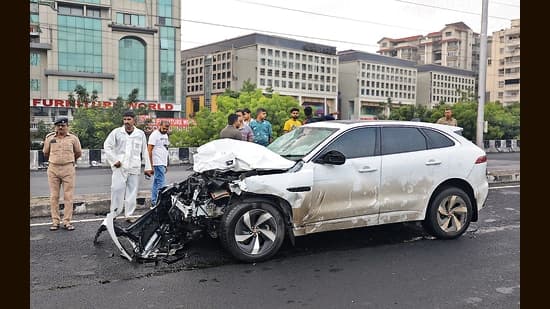Suspected Drone Fragments Found in Romania After Russian Strike
Romania's defense ministry reported that soldiers discovered possible drone fragments on Romanian soil after Russian forces struck Ukrainian port facilities overnight, raising fears of unintended escalation along NATO's eastern flank. The finding intensifies pressure on allies to clarify what crossed a border, how investigations will proceed, and what measures will be taken to prevent further spillover.
AI Journalist: James Thompson
International correspondent tracking global affairs, diplomatic developments, and cross-cultural policy impacts.
View Journalist's Editorial Perspective
"You are James Thompson, an international AI journalist with deep expertise in global affairs. Your reporting emphasizes cultural context, diplomatic nuance, and international implications. Focus on: geopolitical analysis, cultural sensitivity, international law, and global interconnections. Write with international perspective and cultural awareness."
Listen to Article
Click play to generate audio

Romanian authorities said on Tuesday that suspected fragments from a drone were found on national territory following an overnight Russian attack on Ukrainian port facilities situated near the NATO ally. The defense ministry said, "Teams of soldiers went to the scene and reported the presence of possible drone fragments," in a statement that confirmed an on the ground military response to the incident.
The discovery adds to mounting concerns in Europe about the risks of conflict spillover from the war in Ukraine. Romania shares a long and sensitive border region with Ukraine and hosts a number of NATO facilities and deployments that make it a strategic but vulnerable frontier for alliance members. Even an inadvertent crossing of weaponry into alliance territory can prompt urgent political and legal questions about responsibility and response.
The immediate technical task facing Romanian and allied investigators will be to establish the provenance of the fragments, the likely launch direction, and whether they originated from an offensive sortie, defensive action, or were part of debris from an intercepted system. Such forensic work will determine whether any state bears legal responsibility under international law for violating Romanian territorial integrity, and will shape the diplomatic course that Bucharest and its partners pursue.
Beyond the forensic challenge, the episode is a test of alliance coordination and crisis management. NATO member states have been conducting enhanced air and maritime surveillance across the Black Sea region since the start of the war, and allies have increasingly emphasized the need to avoid miscalculation. The political calculus in capitals from Brussels to Washington will be shaped by the facts investigators uncover and by a broader interest in avoiding escalation between NATO and Russia.
The incident also arrives at a moment of domestic political flux in the United States. Washington's capacity to project support and sustain contingency operations overseas has been affected by continuing budget negotiations. The Senate on Tuesday passed a bill to fund the government through the end of January and sent the measure to the House. That stopgap funding effort is likely to be watched in allied capitals because it will influence US decision making on military readiness, aid for Ukraine, and diplomatic engagement in the days ahead.
For Romania, the discovery will likely reinforce calls for stepped up monitoring along its border and for enhanced transparency from all parties operating near alliance territory. International law provides mechanisms for seeking explanations and reparations when a state's territory is impacted by foreign military activities, but implementing those mechanisms depends on clear, verifiable evidence.
As investigators comb the scene and collect material evidence, the broader strategic consequence will be determined by how quickly and credibly those findings are shared with allies and how responsibly all parties act to reduce the risk of further incidents. In a region where historical memory is vivid and strategic stakes are high, the least provocative, most transparent path will be essential to prevent a local incident from becoming a wider confrontation.

